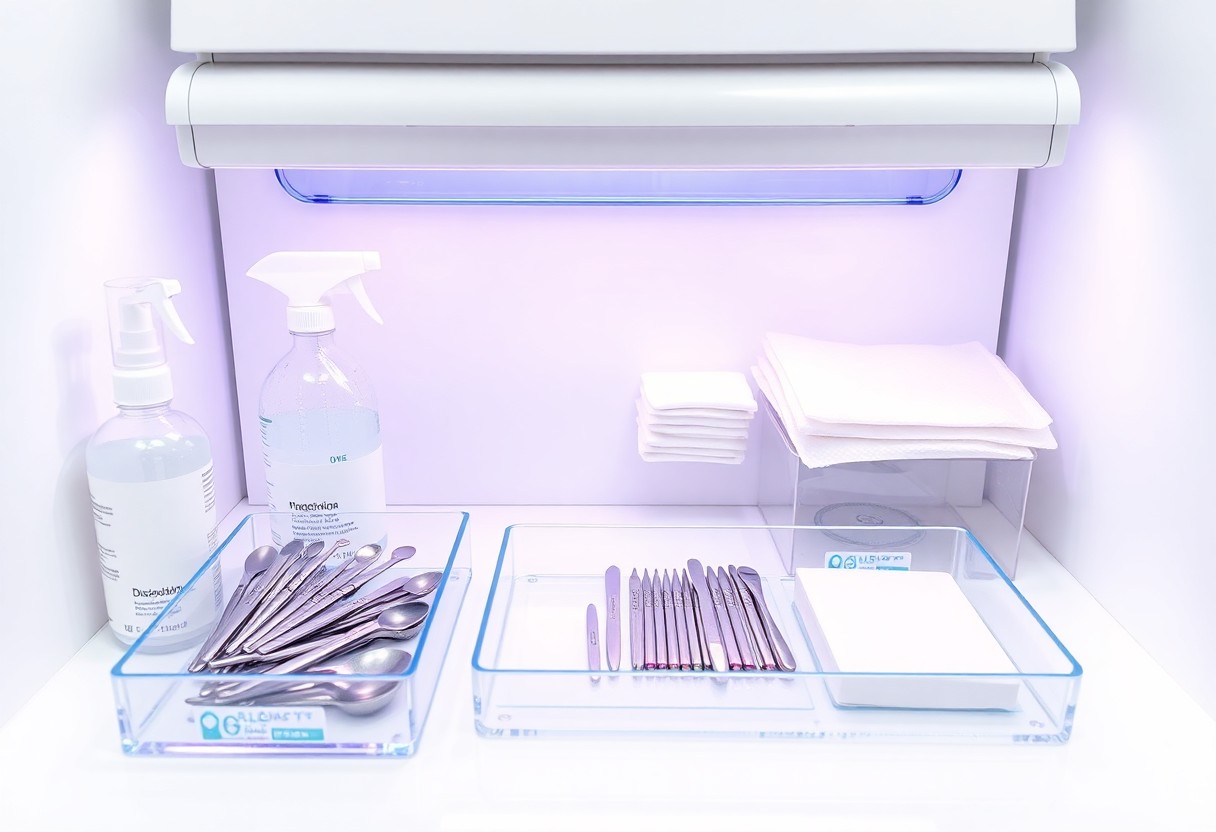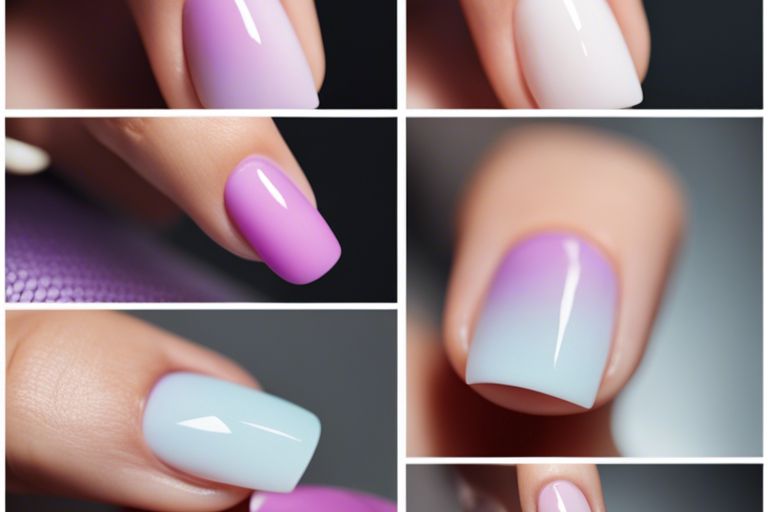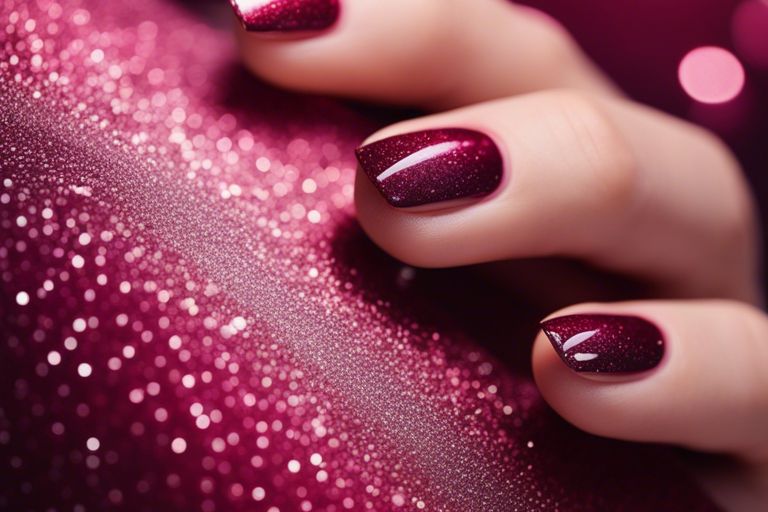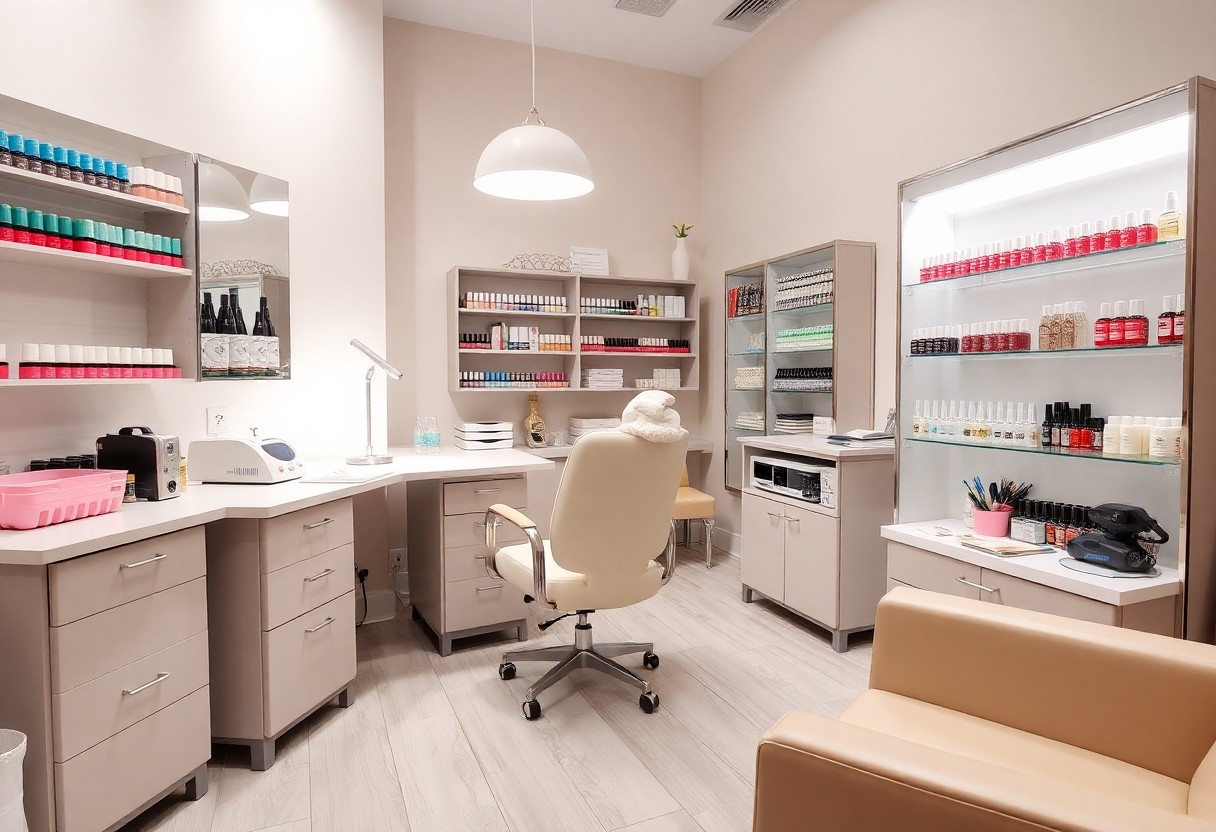Just as a clean workspace enhances the experience for your clients, proper sanitation of nail salon equipment is important for preventing infections and ensuring safety. You need to establish a routine that includes thorough cleaning, disinfection, and sterilization of all tools used in your salon. By understanding best practices for equipment sanitation, you can protect both your clients and your business, creating an environment where everyone feels secure and satisfied. This guide will equip you with the knowledge to maintain a hygienic workspace that meets industry standards.
Key Takeaways:
- Regularly disinfect all tools and surfaces to prevent the spread of bacteria and ensure a clean environment for clients.
- Use single-use items whenever possible, such as nail files and buffers, to minimize cross-contamination risks.
- Maintain a clear and organized workspace, facilitating easy cleaning and reducing potential hazards associated with clutter.
Elevating Industry Standards: The Importance of Equipment Sanitation
Maintaining high standards for equipment sanitation not only establishes trust with your clients but also elevates the overall reputation of the nail salon industry. Customers are more informed than ever and expect their salon to uphold the highest hygiene protocols. Regular sanitation practices demonstrate your commitment to customer safety, which can set your business apart and encourage repeat visits. By prioritizing sanitation, you create a positive environment where clients feel comfortable, ultimately benefiting your bottom line.
Health Risks Associated with Unsanitary Conditions
Unsanitary conditions expose clients and staff to a range of health risks, including fungal infections, bacterial infections, and more serious diseases like Hepatitis B. Contaminated tools and surfaces can serve as breeding grounds for pathogens, leading to outbreaks within your salon. Infections can cause severe discomfort and can also carry legal ramifications for your business, making sanitation a non-negotiable priority.
Regulations and Compliance: What You Need to Know
Compliance with local and national health regulations is crucial for your salon’s operation. Each state has specific laws governing equipment sanitation, including how to clean and sterilize tools. Familiarizing yourself with these requirements not only protects your clients but also shields your business from potential fines or legal issues.
Understanding the regulatory landscape is vital as it keeps your salon compliant and reduces liability risks. For example, many regions mandate that all reusable tools are to be disinfected using hospital-grade disinfectants between each use. Likewise, single-use items, such as buffers and pedicure liners, must be discarded after each appointment. Regular audits by health inspectors can occur, so having documented procedures demonstrating compliance can make a significant difference. Keeping informed about updates in health regulations is crucial in maintaining your salon’s reputation and avoiding penalties.
Daily Routines: Essential Cleaning Protocols
Implementing a structured daily routine for cleaning is fundamental to maintaining a hygienic workspace in your nail salon. Each day, ensure to sanitize all tools, workstations, and surfaces to minimize the risk of contamination. This includes wiping down tables, chairs, and any other frequently touched surfaces. Develop a checklist to ensure no area is overlooked; consistency is key in preventing the spread of bacteria and viruses.
Disinfecting Tools: Techniques That Work
After each use, all metal tools must be disinfected using a hospital-grade disinfectant. Begin by soaking them in disinfectant solution, ensuring they remain submerged for at least ten minutes. Rinse them thoroughly with water before drying. Using a UV sterilizer can also add an extra layer of sanitation, as it effectively kills pathogens without risk for metal damage.
Effective Cleaning Agents: What to Use and Avoid
Selecting the right cleaning agents not only enhances sanitation but also protects your equipment’s longevity. Use EPA-registered disinfectants with proven effectiveness against viruses and bacteria, avoiding harsh chemicals that can corrode metal tools. Common safe methods include using 70% isopropyl alcohol and hydrogen peroxide for surfaces. Steering clear of bleach is generally advised, as it can weaken some materials and lead to faster degradation over time.
Additionally, organic cleaning agents can be a great alternative, offering effective sanitation without harsh chemicals. Products containing tea tree oil or eucalyptus are well-regarded for their antimicrobial properties. However, always refer to manufacturer instructions for both your equipment and cleaning agents to prevent damage, and ensure compatibility. Your cleaning methods and materials should not only create a spotless environment but also ensure the longevity of your vital tools, providing the best care for your clients.
Beyond the Basics: Advanced Sanitation Strategies
Elevate your sanitation practices with advanced strategies that go beyond standard protocols. Integrating sophisticated technologies and tailored policies ensures an even safer environment for both clients and technicians. You can streamline processes and boost your team’s thoroughness with these innovative solutions.
- Utilize advanced cleaning agents that are effective against a broad spectrum of pathogens.
- Incorporate air sanitization systems to reduce airborne contaminants.
- Regularly train your staff on evolving best practices and sanitation technologies.
- Invest in sterilization equipment, including UV-C lights, to enhance disinfection.
- Develop a feedback system from clients regarding your sanitation practices.
Advanced Sanitation Strategies
- Ultrasonic Cleaners
Use sound waves to create microscopic bubbles that remove dirt and pathogens.
- Air Purification
Incorporates HEPA filters and UV-C lights to eliminate airborne germs.
- Regular Training
Keep staff informed on the latest sanitation protocols and tools.
Ultrasonic Cleaners: A Game Changer
Ultrasonic cleaners are revolutionizing sanitation in nail salons by employing high-frequency sound waves to dislodge dirt and microbes from tools effectively. These devices can reach crevices that manual cleaning often misses, ensuring your implements are as clean as possible. By investing in ultrasonic cleaners, you can guarantee thorough sanitation with minimal effort, making them an invaluable addition to your hygiene toolkit.
Implementing a Sanitation Schedule: Consistency is Key
A well-defined sanitation schedule ensures that cleaning practices become second nature for your team. Institute specific times throughout the day for thorough cleaning, including pre-opening, post-service, and at scheduled intervals. This routine not only fosters accountability among staff but also raises client confidence in your hygiene standards.
Developing an effective sanitation schedule should prioritize high-touch areas and frequently used tools. Break the cleaning tasks into manageable segments—perhaps designed for morning, mid-day, and end-of-day. Assign specific responsibilities to staff members to foster a culture of accountability, while also allowing for flexibility to adjust based on daily client traffic and needs. This proactive approach minimizes the risk of contamination and enhances your salon’s reputation for superior cleanliness.
Staff Training: Empowering Your Team for Success
Effective sanitation starts with a well-trained staff. Equip your team with the knowledge and skills they need to maintain hygiene standards and ensure client safety. Offering regular training sessions helps reinforce best practices and keeps your staff updated on the latest sanitation guidelines. Create a culture where team members feel confident in their abilities to tackle sanitary challenges, contributing to a safer salon environment for both staff and clients.
Best Practices for Employee Education
Focus on comprehensive training that covers both the technical aspects of sanitation as well as the importance of personal hygiene. Utilize interactive workshops, demonstrations, and written materials to engage employees. Incorporate real-world scenarios to illustrate how proper sanitation impacts client satisfaction and the salon’s reputation. Encouraging questions will enhance understanding and retention, ensuring your team adopts these practices effectively.
Creating a Culture of Cleanliness in the Workplace
A clean and hygienic workspace cultivates a sense of pride among employees, which can significantly affect their performance and client interactions. Integrating cleanliness into your salon’s values encourages employees to take ownership of their areas, ensuring every surface is spotless and tools are sanitized after each use. A well-maintained environment not only enhances client trust but also increases employee morale, fostering teamwork and accountability in maintaining sanitation standards.
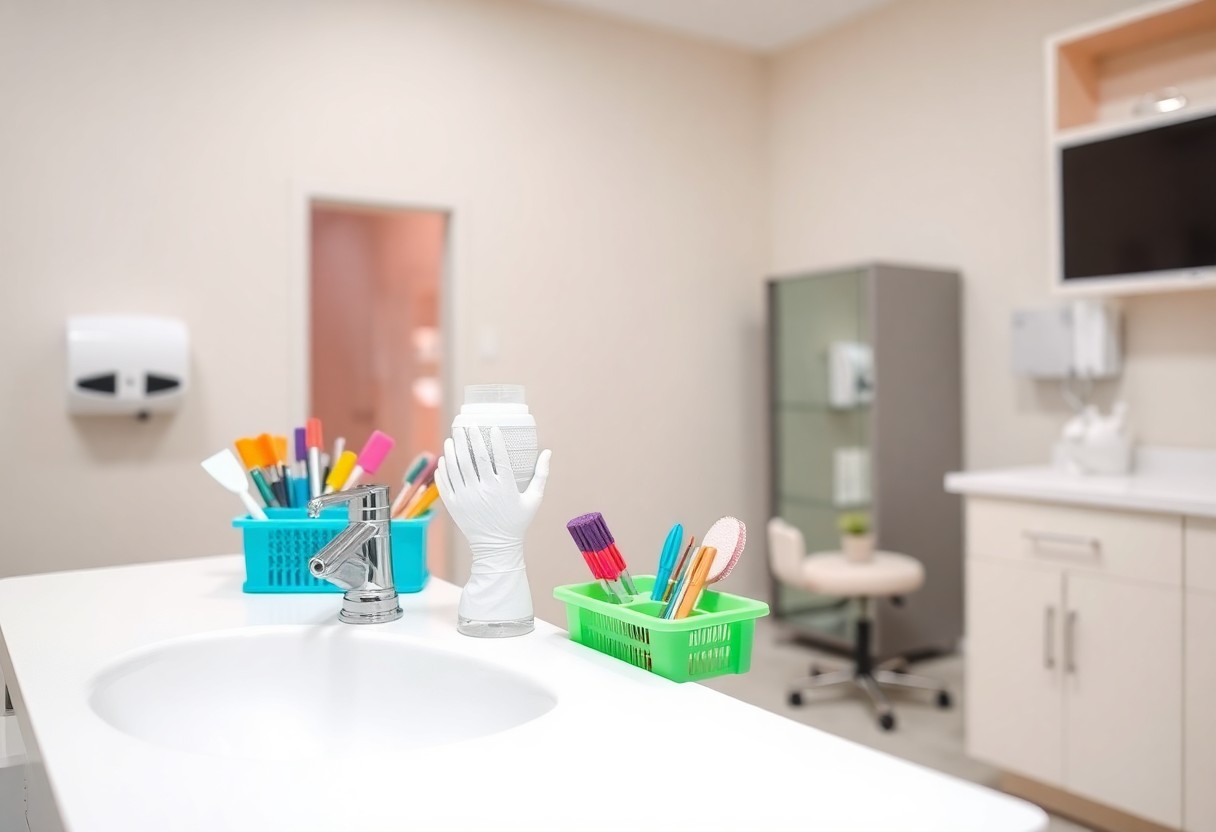
Client Perception: The Impact of Hygiene on Business
Client perception significantly influences your nail salon’s success. A spotless environment and rigorous sanitation practices foster confidence, ultimately translating into client loyalty and repeat business. Studies indicate that salons emphasizing hygiene report a 25% increase in customer retention. A clean workspace reassures clients that you prioritize their health and safety, allowing them to relax and enjoy their pampering experience without fear of contamination.
Building Trust Through Transparency
Transparency about sanitation protocols enhances client trust. Sharing your sanitation methods, such as autoclaving instruments and using disposable tools when possible, reassures clients that you’re committed to their wellbeing. By openly communicating your hygiene practices, you create an environment where clients feel valued and safe, increasing the likelihood of positive reviews and referrals.
Marketing Your Hygiene Practices Effectively
Effectively showcasing your hygiene practices can set you apart from the competition. Use social media platforms to share videos or images of your sanitation processes. Hosting client workshops where you discuss your health protocols can further engage customers. Highlighting certifications and inspections on your website or in your salon can also inform prospective clients that you uphold the highest standards of hygiene and safety.
Incorporating hygiene-centric marketing strategies not only increases visibility but also reinforces your brand’s commitment to safety. Posting testimonials from satisfied clients who appreciate your cleanliness can create a positive feedback loop. Consider offering a “hygiene guarantee” to reassure clients that you adhere to the strictest sanitation protocols, providing peace of mind during their salon visits. Investing time and creativity into promoting your hygiene practices can lead to greater client loyalty and an enhanced reputation within the community.
Conclusion
Considering all points, maintaining a hygienic workspace is imperative for your nail salon’s success and your clients’ safety. By implementing best practices for equipment sanitation—from proper sterilization techniques to regular cleaning schedules—you enhance the overall experience for your clientele and protect your reputation. Make hygiene a priority in your salon to ensure that both you and your customers can enjoy a safe and pleasant environment, ultimately leading to better client retention and satisfaction.
FAQ
Q: What are the imperative steps to sanitize nail tools effectively?
A: To effectively sanitize nail tools, start with a thorough cleaning process. Begin by removing any visible debris or residue using soap and water. After cleaning, immerse the tools in an EPA-registered disinfectant for at least the recommended contact time provided by the manufacturer. It’s important to rinse the tools with clean water after disinfection to eliminate any chemical residues. Lastly, allow the tools to air-dry completely before storing them in a clean, dust-free environment.
Q: How often should salon equipment be disinfected and maintained?
A: Nail salon equipment should be disinfected after each use to prevent cross-contamination between clients. Additionally, deeper sanitation routines should be performed daily, including wiping down all surfaces and tools that came into contact with clients. Regular maintenance checks on equipment should be conducted weekly to identify any wear or damage that could compromise hygiene or functionality.
Q: What are best practices for maintaining a hygienic workspace in a nail salon?
A: Maintaining a hygienic workspace in a nail salon involves several best practices. First, always ensure that workstations are cleaned and disinfected after each client. Use disposable items, such as nail files or buffers, when possible to minimize contamination. Provide hand sanitizers for both clients and staff. Staff should also wear gloves while performing services and wash their hands between clients. Additionally, it’s beneficial to schedule routine deep cleans of the salon, including floors, walls, and upholstered furniture, to maintain a consistently hygienic environment.

